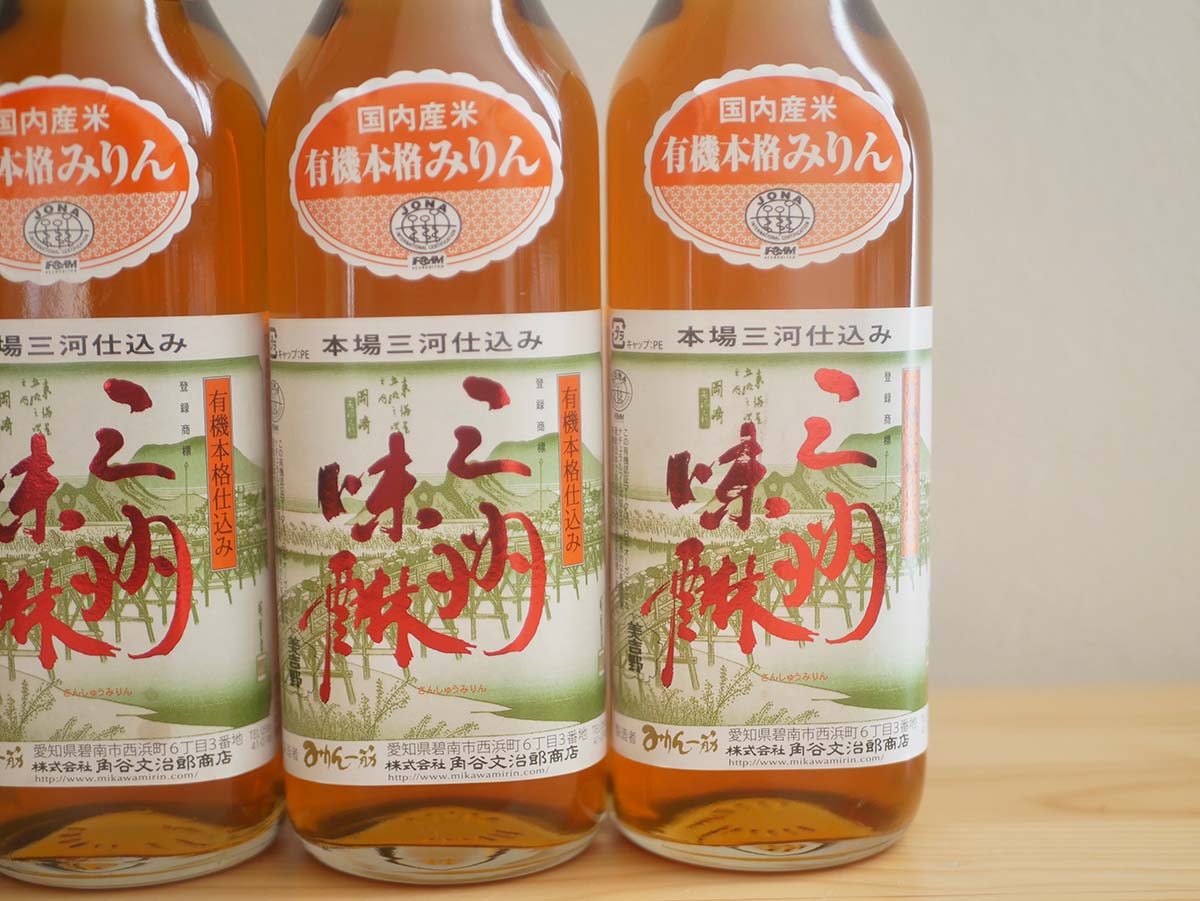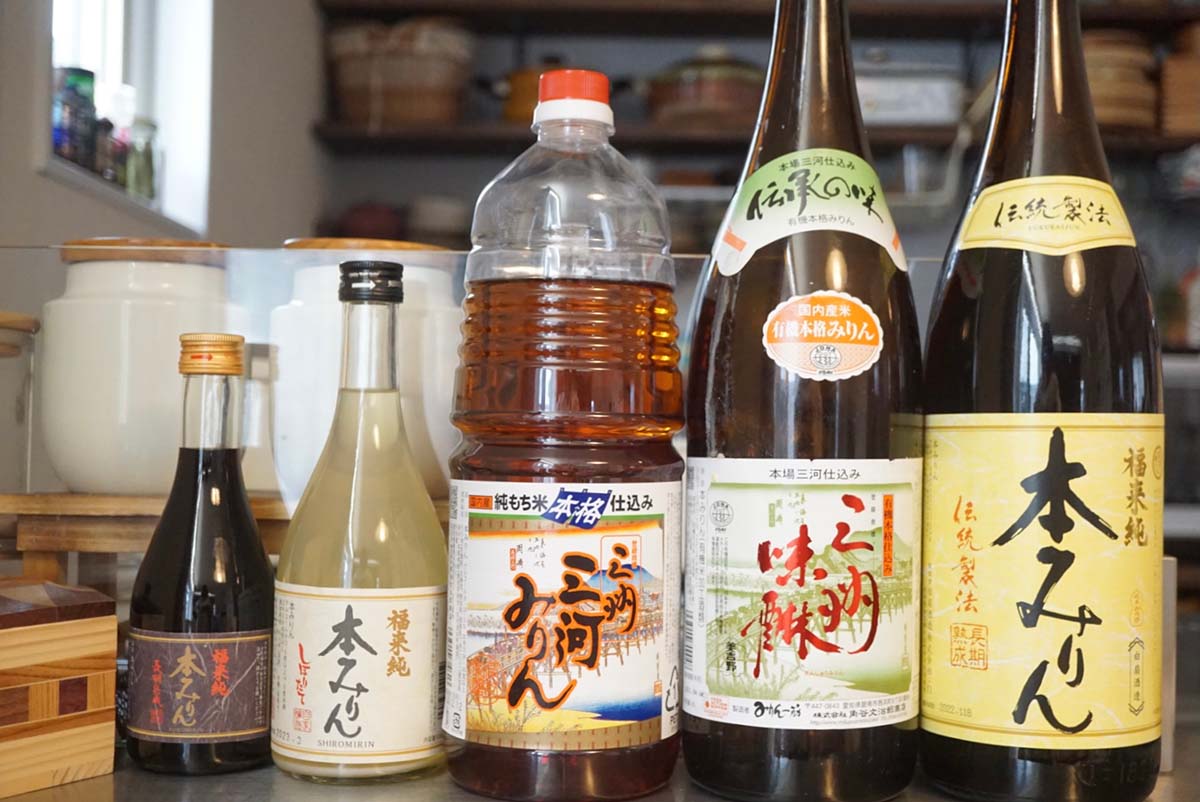History of Mirin
Last October, American food professionals visited fermented food producers to deepen their knowledge of Japanese fermentation culture during the “Hakko Tourism in Japan” tour campaign. As part of the tour, organizers held a tasting session where guests gave candid advice from the perspective of the American market to food product manufacturers looking to enter the United States market.
In this column, I am writing about one of the most famous Japanese traditional seasonings, hon-mirin. I hope to spark your curiosity about hon-mirin through these articles.
In the previous article, I have explored the types of mirin in detail.
Today, I am going to explore the history of mirin.

Mirin used to be an expensive drink enjoyed by the upper class.
There are various theories when it comes to the origin of mirin but without certainty. There are two theories that are supported today. The first theory, “Japanese Origin Theory”, is that mirin was derived from Japanese sakes called neri sake and shiro sake, which are made from ingredients such as sticky rice, rice koji, and sake. The second theory, “China Origin Theory”, is that mirin was brought from China, where Mirin-shu, a honey-like sweet and concentrated sake.
The oldest article written about Japanese mirin is said to be “Komai Nikki,” a journal written in the Sengoku Era (1593). Mirin is said to been born during the Muromachi to Sengoku eras, and was enjoyed among the upper class as gifts and as sweet and novel alcohol beverage considered to be a delicacy.

While mirin is thought to be a seasoning today, it was actually born as a beverage.
In the Sengoku era, shochu, a distilled beverage, was brought to Japan, and mirin began to be made using shochu. Mirin was also used as drinks to welcome evangelists who brought Christianity to Japan at that time.
Mirin became for everyone 400 years ago.
In the Edo era, mirin became available to the middle-class as a sweet and luxurious drink that women could also enjoy. Mirin started to be used as a seasoning around this era which is known to be the period in which Japanese cuisine was completed.
At that time, mirin was regarded as a sweetener that was more accessible than sugar and were used in restaurants for dishes such as eel and noodles. It was during this period that mirin became an integral part of Japanese cuisine as a seasoning.
It was also during this time period when mirin was categorized into two categories: “Hon-mirin,” which has less shochu content and is used for cooking, and “Hon-naoshi (Yanagikage),” which has a higher shochu content and is enjoyed as a beverage.
As Japan entered the Meiji era, the demand for mirin as a seasoning increased. In the past, mirin had been regarded as a sweet alcoholic beverage, or mirin-shu “concentrated alcohol” in Japanese. In the fourth year of Meiji era, the name “mirin” was officially established under the laws of alcohol beverage taxation.
High tax led to decrease of manufacturers and increase of variations.
During the Show-era, hon-mirin was banned from year 18 for eight years. The country suffered from a lack of food due to the war and the production of hon-mirin with rice as the main ingredient was banned.
Even after the ban was lifted, with a hefty 75% tax imposed, many of the mirin manufacturers had to give up their licenses. Currently, only 100 plants are still in existence, compared to the height of 3,000 of the Meiji era.
This led to alternative mirin seasonings such as salt-added fermented seasonings, mirin-flavored seasonings, and hon-mirin with added sugar and less concentrate to pop up in the market as “mirin”.
As I wrote in another article, the history of mirin explains why we have come to know mirin that is not produced in the traitional authentic method as “mirin” and why there are only a few authentic mirin manufacturers left today.
It was only after I started to make sweets using mirin and by learning more about mirin and its history, that I became fascinated by mirin. Understanding the historical context, I am motivated to spread the knowledge and the appeal of the traditional manufacturing method of hon-mirin to the next generation.
In the next article, I’d like to explore the applications of mirin. Thank you for reading!
References:
Hideo Morita (2003) ‘Mirin no Chishiki’. Saiwaishobo.
Materials provided by Sumiya-Bunjiro Shoten Sanshu-Mikawa-Mirin and Hakuo Shuzo
Maho Tanabe, the organizer of "Mirin Sweets and Fermented Foods" at Minamoto Shokudo, is an inner beauty planner and owner of Minamoto cafeteria. With expertise in fermented foods using koji and sake, she is a recognized authority in the fermented foods industry.

